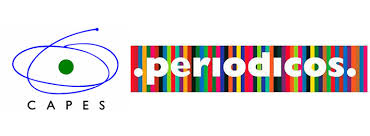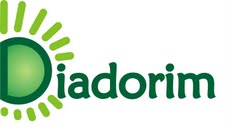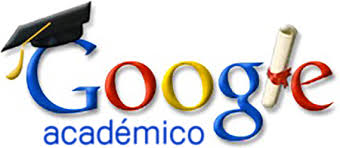INCORPORATION OF BACK-PRESSURE EFFECTS IN THE MODELING OF THE PISTON RING/CYLINDER LINER
DOI:
https://doi.org/10.26512/ripe.v2i31.21331Keywords:
Hydrodynamic lubrication. Friction force. Back-pressure effects. Elrod-Adams model.Abstract
The piston ring/cylinder liner system is responsible for about 5% of the energy lose due to friction in a passenger car (Holmberg et al., 2012). Consequently, automotive industry and academy have made efforts seeking for designs that diminish both friction and wear. During the last year, several numerical and experimental studies have shown that texturization can have favorable or detrimental effects on the tribological characteristics of lubricated mechanisms. However, few studies have included the effects of the gas pressure in the combustion chamber, which variates rapidly in the compression stroke and can reach values as high as 60[atm]. Reynolds equation with zero-pressure Dirichlet conditions is mainly adopted in numerical works along with Elrod-Adams cavitation model. This cavitation model only admits a constant cavitation pressure, in spite it is known that cavitation pressure can variate according to the operational conditions (Shen et al., 2013). This work is devoted to the study of the effects that the combustion chamber pressure can have on both the mechanical dynamic of the rings and the cavitation pressure p.
Downloads
References
Alt, H. W. 1980. Numerical solution of steady-state porous flow free boundary problems. Numer.
Math. vol. 36.n. 1, pp. 73”“98.
Ausas, R. et al. 2007. The impact of the Cavitation model in the Analysis of Micro-Textured
Lubricated Journal bearings. ASME J. Tribol. vol. 129.n. 4, pp. 868”“875.
Checo, H. M. et al. 2014. Moving textures: Simulation of a ring sliding on a textured liner.
Tribol. Int. vol. 72, pp. 131”“142.
Dobrica, M. B. et al. 2010. Optimizing surface texture for hydrodynamic lubricated contacts
using a mass-conserving numerical approach. Proc. IMechE vol. 224.n. 8, pp. 737”“750.
Gadeschi, G. B., K. Backhaus, & G. Knoll. 2012. Numerical Analysis of Laser-Textured Piston-
Rings in the Hydrodynamic Lubrication Regime. ASME J. Tribol. vol. 134.n. 4, pp. 1”“8.
Holmberg, K., P. Andersson, & A. Erdemir. 2012. Global energy consumption due to friction
in passenger cars. Tribol. Int. vol. 47, pp. 221”“234.
Marini, L. D. & P. Pietra. 1986. Fixed-point Algorithms for Stationary Flow in Porous Media.
Comput. Methods Appl. Mech. Eng. vol. 56.n. 1, pp. 17”“45.
Morris, N., M. Leighton, et al. 2014. Combined numerical and experimental investigation of the
micro-hydrodynamics of chevron-based textured patterns influencing conjunctional friction
of sliding contacts. Proc. Inst. Mech. Eng. Part J J. Eng. Tribol. n. 4.
Morris, N., R. Rahmani, et al. 2015. A Numerical Model to Study the Role of Surface Textures
at Top Dead Center Reversal in the Piston Ring to Cylinder Liner Contact. J. Tribol. vol.
n. 2, p. 021703.
Qiu, Y. & M. M. Khonsari. 2009. On the Prediction of Cavitation in Dimples Using a Mass-
Conservative Algorithm. ASME, J. of Trib. vol. 131.n. 4, pp. 041702”“1.
Shen, C. & M. M. Khonsari. 2013. On the Magnitude of Cavitation Pressure of Steady-State
Lubrication. Tribol. Lett. vol. 51.n. 1, pp. 153”“160.
Usman, A. & C.W. Park. 2016. Optimizing the tribological performance of textured piston ringliner
contact for reduced frictional losses in SI engine:Warm operating conditions. Tribol. Int.
vol. 99, pp. 224”“236.
Wang, Q. J. & Chung Y. W. 2013. Encyclopedia of Tribology. First. Springer.
Downloads
Published
How to Cite
Issue
Section
License
Given the public access policy of the journal, the use of the published texts is free, with the obligation of recognizing the original authorship and the first publication in this journal. The authors of the published contributions are entirely and exclusively responsible for their contents.
1. The authors authorize the publication of the article in this journal.
2. The authors guarantee that the contribution is original, and take full responsibility for its content in case of impugnation by third parties.
3. The authors guarantee that the contribution is not under evaluation in another journal.
4. The authors keep the copyright and convey to the journal the right of first publication, the work being licensed under a Creative Commons Attribution License-BY.
5. The authors are allowed and stimulated to publicize and distribute their work on-line after the publication in the journal.
6. The authors of the approved works authorize the journal to distribute their content, after publication, for reproduction in content indexes, virtual libraries and similars.
7. The editors reserve the right to make adjustments to the text and to adequate the article to the editorial rules of the journal.









